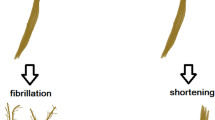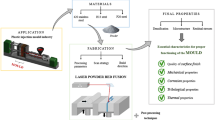Abstract
Fibre-reinforced plastic (FRP) are becoming increasingly important in aerospace and premium automotive applications. Usually, the manufacturing of FRP components requires dry machining which generates large quantities of dust. Because of their small size, the dust particles are extremely harmful to machine components and the operator’s physical health. To prevent long-term damage an effective suction system is required. Currently, extraction systems are subsequently integrated into conventional machine tools with no regard to energy efficiency. Hence, this paper introduces the development of an energy-efficient and intelligent dust suction concept for dry machining of FRP. Numerical flow simulations are used to investigate the effectiveness of a central suction as well as local suction at the cutting tool. In order to evaluate the newly developed concept, the amount of extracted particles along with the necessary volumetric flow rates are assessed. The simulation results demonstrate an improved dust particle extraction and an energy saving potential of up to 70%.









Similar content being viewed by others
References
Walter J, Hustedt M, Staehr R, Kaierle S, Jaeschke P, Suttmann O, Overmeyer L (2014) Laser cutting of carbon fiber reinforced plastics—investigation of hazardous process emissions. Phys Proc 56:1153–1164
Sheikh-Ahmad JY (2009) Machining of polymer composites. Springer, New York
Kroll L, Blau P, Wabner M, Frieß U, Eulitz J, Klärner M (2011) Lightweight components for energy-efficient machine tools. CIRP J Manuf Sci Technol 4(2):148–160
Masahiro H, Takashi I, Masanobu M, Wataru A, Fumiaki M (2016) Dust collection validity and effect of hole shape accuracy of CFRP with developed hollow-type drill and dust collector. IJAT 10(3):324–333
Haddad M, Zitoune R, Eyma F, Castanie B (2014) Study of the surface defects and dust generated during trimming of CFRP: Influence of tool geometry, machining parameters and cutting speed range. Composites A 66:142–154
Bundesanstalt für Arbeitsschutz und Arbeitsmedizin (2006) TRGS 900 Arbeitsplatzgrenzwerte
Schneider M, Birenbaum C, Gebhardt A (2012) Absaugvorrichtung sowie Verfahren zum Absaugen eines Partikelstromes (DE 10 2012 023 328 B3). Accessed 05 Feb 2016
Denkena B, Flöter F, Hülsemeyer L (2012) Enery-Efficient machine tools and technologies. In: 15th International Machine Tool Engineers’ Conference, Tokyo
Menter FR (2009) Review of the shear-stress transport turbulence model experience from an industrial perspective. Int J Comp Fluid Dyn 23(4):305–316
Acknowledgements
This research and development project is funded by the German Federal Ministry of Education and Research (BMBF) within the programme “Innovations for Tomorrow’s Production, Services, and Work” (02P14A161) and managed by the Project Management Agency Karlsruhe (PTKA). The authors are responsible for the contents of this publication.
Author information
Authors and Affiliations
Corresponding author
Rights and permissions
About this article
Cite this article
Denkena, B., Dittrich, M.A. & Rahner, B.H. Smart and energy-efficient dust suction concept for milling of fibre-reinforced plastics. Prod. Eng. Res. Devel. 11, 723–729 (2017). https://doi.org/10.1007/s11740-017-0776-x
Received:
Accepted:
Published:
Issue Date:
DOI: https://doi.org/10.1007/s11740-017-0776-x




